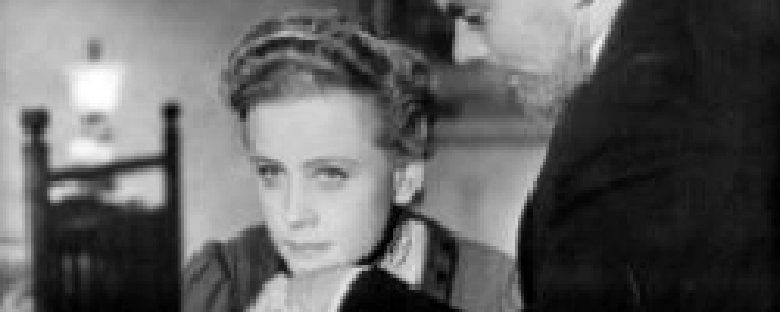Reviews
Dama s sobachkoy
Josif Heifits
Soviet Union, 1960
Credits
Review by Marlin Tyree
Posted on 22 November 2006
Source Image Entertainment DVD
Inner revolt and resignation are aspects of the extreme ambivalence at the center of Anton Chekhov’s oeuvre, including his short stories, from which Josif Heifits’ film, Lady with the Little Dog derives. The narrative is at once firmly centered in 19th century Russia, primarily among the complacent world of the bourgeoisie, and alternatively in the inner reaches of the mind of the main character, Dmitri Gurov. In fact, during the intermittent reflective passages, Chekhov’s literary impressions encourage Heifits to transcend the boundaries of narrative altogether, however fleetingly, heightening the tragic and romantic aspects of the story without sentimentalizing or trivializing them. The film is utterly self-conscious yet continually seeks a void of form. This tension, mirrored in the relationship between the two main lovers, compels our interest, resonates far beyond the love affair and leaves a most haunting portrait of an essentially human dilemma.
This tension, essentially existential in nature, also marks the difference between a run-of-the mill adultery yarn and Chekhov’s short story transposition. Heifitz, a forerunner of the “historic realism” style in Soviet films, captures expertly Chekhov’s portrait of modern man trapped by his own conditioning and seemingly unwilling or unable to change it.
In brief, the narrative concerns the relationship between Gurov, a middle-aged Moscow banker and a young married woman (the lady with the little dog), Anna, who meet at a summer resort in Yalta, have a brief affair and continue to have clandestine meetings in a Moscow hotel. But the “secret love affair” which lies at the surface of the film masks Gurov’s dilemma; namely, leading a life which necessitates having the affair to begin with.
Though we are not privy to Gurov’s ruminations that occur at the beginning of the short story, it’s clear fairly early in the film that he is at something of a crossroads in his personal life. A sophisticate and self-acknowledged ladies’ man, the vacation in Yalta marks the beginning of a change in consciousness for Gurov, or at least a realization of his inability to change his pattern of behavior. His encounter with Anna, her naiveté in particular, starts him on a course of questioning the seemingly inescapable condition of his everyday life. The encounters with those in his everyday world, on the other hand, their obliviousness in particular, re-enforce the impression of unrelenting confinement from which he seeks escape.
All of this is brought to the foreground through Dmitri Meskhiyev (Ivan The Terrible, Dark is the Night; Lady with the Little Dog would be his last major film work) and Andrei Moskvin’s finely tuned visual approach. The pace with which each scene is shot is carefully considered and crafted to reflect Gurov’s ruminations. There are no third party perspectives (location, establishment shots and the like). It’s as if the filmmakers are attempting to mirror the mental journey of Gurov as he travels through the various Russian cities (en route to or coming from his various encounters), visually replicating the physical rhythms of his journeys. The set design by Isaak Kaplan and Berta Manevich (a husband and wife team) is first rate; spare, precise and effectively transports us to the 19th century without undue fanfare or attention-grabbing grandiosity. The music employed throughout the film is also effective, though a bit lush at times and in my mind, seldom necessary, given the powerfully evocative nature of the visuals. In fact, the studied sequences often resemble the mood and feel of a silent film: the black and white stock, the muted, soft focus lighting, and physical expressiveness of the actors.
Most provocatively, however, are the moments that occur when national or local points of visual reference are absent from the frame altogether. Shots, for example, of the open sea and the horizon or an anonymous priest going about his daily chores amidst the rocky terrain of the coastline evoke what Gurov in his awakening cannot articulate. The kind of communion he seeks cannot be found in his everyday world or even in his relationship with Anna, though the affair presents the possibility. The actuality, which is plainly evident through the great performances of Alexei Batalov and Iya Savvina (Gurov and Anna, respectively), is that each represents for the other merely the possibility of freedom. In fact, the characters as drawn, are never really more than types or sketches through which the conditions under which they live may be dramatized. It is a salient feature of Anton Chekhov’s short story technique and accordingly, Josif Heifitz’ wonderful film transposition.
We don’t do comments anymore, but you may contact us here or find us on Twitter or Facebook.



